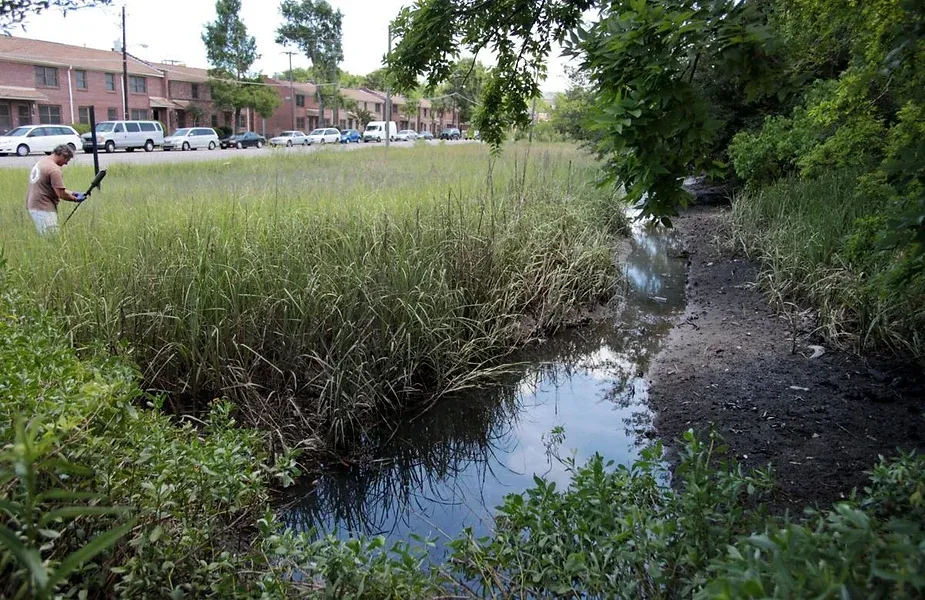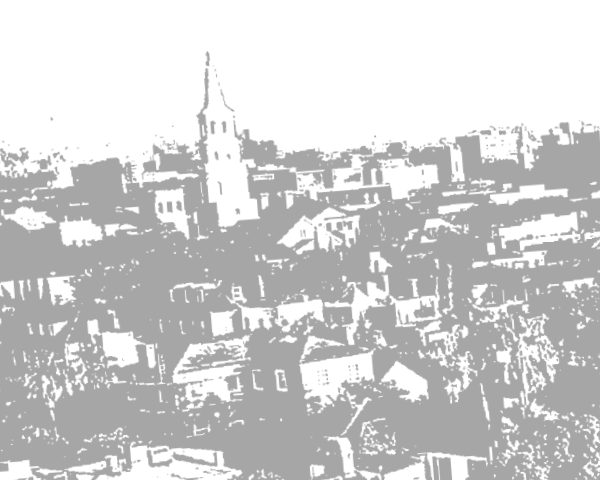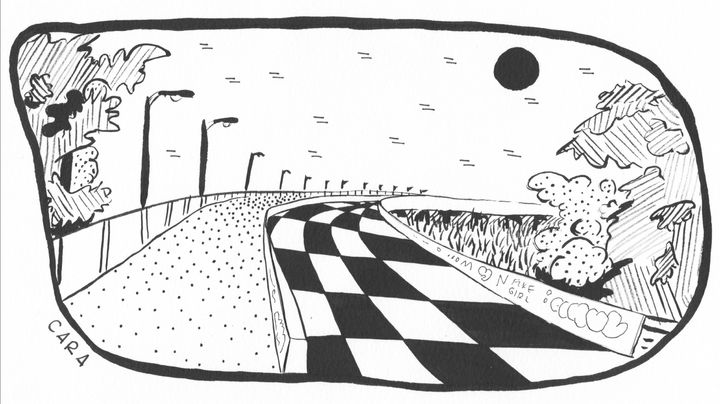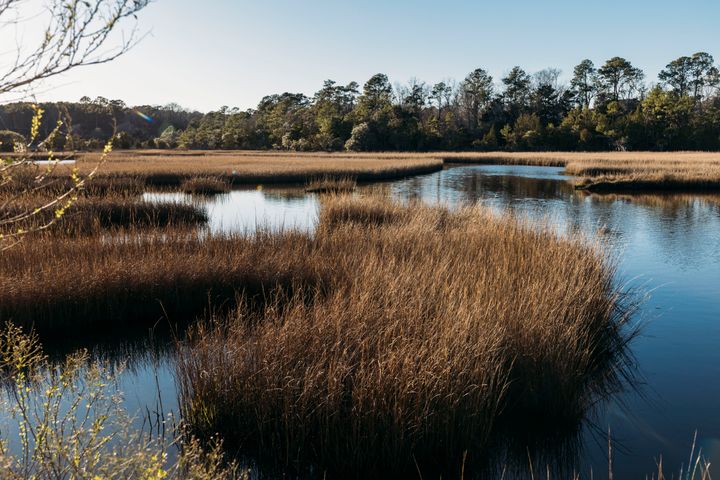The Saga of Gadsden Creek
Friends of Gadsden Creek has been working with SC Environmental Law Project to prevent the filling in of Gadsden Creek.

by Belvin Olasov
Research and content by Friends of Gadsden Creek
Charleston’s history of racial oppression is woven into our landscape – where there once was over 95 acres of marshland, the companion to Charleston’s largest and most prosperous Black community, there is now a layer of landfill, a skyline of hotels and condominiums and a police station, and a small tidal saltmarsh named Gadsden Creek. All four acres of the creek wind between a Publix and a Marriott Hotel, boxed in by parking lots, before curving to run along Hagood Ave, opposite the Gadsden Green public housing complex. An ongoing legal and political battle has the Creek’s future hanging in the balance – on one side, a coalition of activists led by a band of activists (scholars, educators, artists, and community organizers) called the Friends of Gadsden Creek, and on the other, WestEdge Inc., a public-private partnership, with plans to build over the Creek with hotels and condos.
Over the past five years, the Friends of Gadsden Creek have dived into City records and emerged with a clear story: the City of Charleston systematically destroyed the Black community of Gadsden Green and the wetlands they called home, flouting environmental laws in the process. When the City’s Dutch Dialogues calls for the preservation of all marshland, Gadsden Creek included; when the City’s Climate Action Plan calls for protecting wetlands as important carbon sinks; when the City has lost, or pushed out, two-thirds of its Black population in the past 50 years; is now when Charleston will hammer nail into coffin and fill in a culturally important and active tidal saltmarsh? Or will a new paradigm of environmental justice win out, with Gadsden Creek saved, beautified, and preserved for the people of Gadsden Green and the rest of the city?
THE HISTORY

Gadsden Creek used to span over 95 acres, and alongside which grew Charleston’s largest and most prosperous Black community – the Gadsden Green, or “Back da Green,” community, formerly known as Fiddler’s Green. Artisans and industry, butchers and lumberers and markets, bustled on the Peninsula’s left shoulder. A cultural-ecological connection blossomed; the people of Gadsden Green fished, swam, bathed, baptized, and were supported and sustained by the Creek.
THE DESTRUCTION
The City of Charleston, in their 1931 planning document the Knowles Report, commissioned a vision: where Gadsden Creek stood, over 95 new acres of land were to be created by covering the Creek with landfill. The Report was clear on the intended demographics for this new land – white residents. The wetlands that served the City’s Black population were to be destroyed for the benefit of white property owners.
Over the next 40 years, Gadsden Creek was filled over with landfill, creating lucrative property for the City. On May 13, 1958, Mayor William McG. Morrison said, “We are now producing through landfill development an average of 15 plus acres per year, when converted into cash means one-half million dollars per year in city assets which, as I have said before, and I say again, is cash in the bank.”
As Gadsden Creek was systematically dismantled, so too was the Black community that prospered alongside it. In the first quarter of the 20th century, Mayor Maybank had been pushing to seize property from Gadsden Green homeowners as part of “slum clearance,” an attempt to convert Black communities into public housing as part of Urban Renewal In 1938, two tornadoes swept the Charleston peninsula, damaging homes in Gadsden Green. The tornado was used as an opportunity to seize property from Black landowners to access federal New Deal funds.
In a joint letter by Gadsden Green residents, they wrote that "more than 80 percent of the houses are in good repair,” and that “this is the largest group of Colored property owners in any single area in the City of Charleston. If we are forced to give up our homes at this time it will be the greatest tragedy to befall an unfortunate people.” But the land grab went through, resulting in government-controlled, racially-segregated public housing where Black homes once stood.
As for the Creek, a sliver of it remained thanks to the City’s legal jeopardy – the Department of Justice threatened to sue Charleston for 13 years of dumping waste and soil in over 95 acres of wetland, violating the federal 1899 Rivers and Harbors Act. In 1971, the U.S Army Corps of Engineers issued an after-the-fact permit to Charleston with explicit instructions to cease all current and future filling.
THE PRESENT
The City of Charleston was responsible for the systematic displacement and environmental strangulation of Charleston’s largest community of Black homeowners – but now, it has agency in the future of Gadsden Creek. Its leaders can begin long overdue reparations in the name of racial equity and environmental justice. Gadsden Creek can once again become an environmental commons for all, all the while continuing to serve its human neighbors by providing restorative recreation and an outdoor classroom for four Title I schools, filtering stormwater pollutants, storing flood waters, affording habitat for juvenile marine animals, and shorebirds, and buffering storm surge.
The City of Charleston’s government (City Council and Mayor) has the authority to protect Gadsden Creek as its majority landowner – but as financial partners in the WestEdge project, have, at time of publishing, ruled in favor of the development scheme. WestEdge has proposed installing pumping stations as a flooding mitigation scheme in exchange for being allowed to build three hotels and high end condos where Gadsden Creek now stands. The Friends of Gadsden Creek have mobilized hundreds to City Council meetings in protest, joined now by Charleston Area Justice Ministry, a network of 50+ local faith-based congregations that took up the Gadsden Creek protest as their first environmental justice initiative.
The Friends have partnered with SC Environmental Law Project to oppose DHEC allowance of this development, alleging SCDHEC is in violation of its own regulations prohibiting exactly the kind of tidal wetlands development that WestEdge has proposed, such as: “The creation of commercial and residential lots strictly for private gain is not a legitimate justification for the filling of wetlands,” and “Dredging and filling in wetland areas should be undertaken only if a) that activity is water-dependent and b) there are no feasible alternatives.”
Despite the capital and power structures that have every financial incentive to fill in Gadsden Creek, it has survived. A vision for a better Charleston – one where we reckon openly with our past sins, center green infrastructure, and empower and honor our Black residents – continues to animate a grassroots coalition of activists dedicated to the Creek’s protection and restoration. The past is written, but the future is in our hands.


